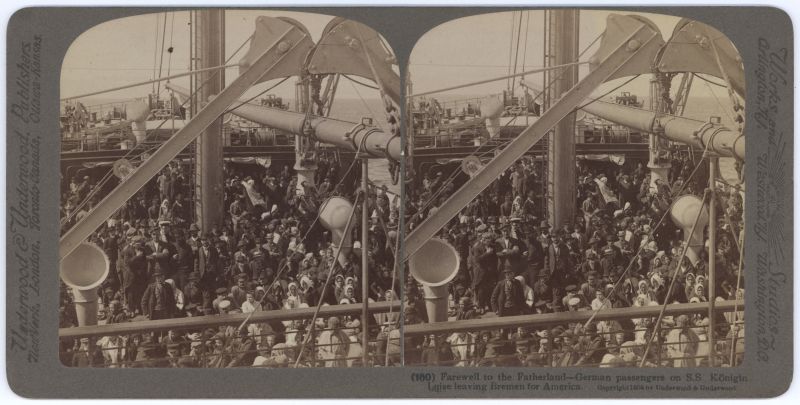Diaspora communities
To Filipinos, labour migration is normal, not unusual

“Many times, the pain of loneliness was too much to bear, I thought I was going mad,” says Jane as she recalls those first few months when she arrived at the small village of Schledehausen in northern Germany. Prayers saved her, and she often went to church. Occasional meetings with other Filipina nurses who, like her, were terribly homesick helped too. They would share the pain of having left small children and families behind, wailing together until the pain in their hearts subsided. Of course, growing up without their mothers was tough for the children too.
Jane made efforts to learn German well, and eventually started to appreciate her new environment. She worked hard and was accepted by her colleagues. The money she earned allowed her to send her children to a good school in the Philippines. She does not regret her choice, even though it was tough.
Policy considerations
Jane was one of the many nurses and midwives who left the Philippines in the 1970s. Not only Germany’s health-care sector was recruiting foreign staff. Countries like Britain or the USA needed immigrants too. In the Philippines, the government of then-President Ferdinand Marcos saw large-scale labour migration as a temporary solution, helping to address huge unemployment at the domestic level as well as rising foreign debts.
The first recruits were mostly men, many of whom were moved to oil-extraction sites in the Middle East. They were referred to as overseas contract workers (OCWs) as they left the Philippines with work contracts signed by their employers.
The exodus continued even after Marcos, a despotic strongman, was toppled by a broad-based popular movement in 1986. The Philippine Overseas Employment Administration (POEA), which had been created in 1982, is still operational. Its mission is to implement “a systematic programme for promoting and monitoring the overseas employment of Filipino workers”. Over the decades, it has supervised millions of employment contracts, averaging to at least 5000 overseas workers deployed every day in the past ten years.
The Commission on Filipinos Overseas (CFO) estimates that as of 2013, some 10.2 million Filipino men and women lived and worked overseas, spread across more than 200 countries and territories. The estimate includes some 4.9 million Filipino migrants who have permanently settled in their countries of destination, most of them in the USA, Canada, Australia, Japan, Britain, Italy, Singapore, Germany, Spain and New Zealand. It also includes more than 4.2 million temporary migrants (with temporary job contracts) most of whom live in Asian countries and some 1.2 million undocumented migrants in countries like Malaysia, the USA and Italy.
The World Bank reckons that the money migrants sent home amounted to about 10 % of the Philippines’ gross domestic product in the past decade. The implication is, that not only the immediate families benefit, but that remittances have actually become an important driver of the Philippine economy. Without labour migration, poverty would be worse in the Philippines, and the political order would certainly be less stable.
Filipino women comprise 56 % of 2 million overseas Filipino workers (OFW) whose contracts were processed by the POEA in 2019, as the Philippine Statistics Authority (PSA) has reported. Not included in the data, however, are thousands of Filipino women who migrate through irregular channels. Since the 1980s, many have left as tourists – but stayed in the countries of destination to work as undocumented immigrants.
Dangerous settings
Employment opportunities for caregivers and domestic helpers from the Philippines grew as women increasingly participated in the labour force of rich industrialised western and Asian countries in the past decades. Almost 40 % of the newly deployed migrants are engaged in elementary occupations such as domestic work, says the 2019 survey of the PSA. Saudi Arabia was the top destination, followed by the United Arab Emirates, Hongkong, Taiwan and Kuwait. But that entails considerable risks, including sexual and physical violence and exploitative working conditions. Especially the undocumented women suffer because they cannot go to the police in cases of need.
The hazards are made clear by the numerous cases of Filipino women who are abused and murdered by their employers. There is a pattern of violence, especially – though not only – in the Middle East.
A prominent case was that of domestic helper Joanna Demafelis. The slain 29-year-old woman was found in the freezer of her employers’ house in Kuwait after she had gone missing. Because of the incident, the Philippine government banned the deployment of Filipino workers to Kuwait in February 2018. A few weeks later, however, the deployment ban was lifted, revealing just how important labour migration is in the eyes of policymakers.
Health-care exodus
Skilled women migrate too, of course, and they tend to get formal sector jobs with better protection. Almost 17,000 Filipino nurses signed overseas work contracts in 2019.
In April last year, however, President Rodrigo Duterte temporarily suspended the overseas deployment of doctors, nurses, and other health workers because of the Covid-19 pandemic. According to the POEA, the step was necessary because a “shortage of about 290,000 health workers in the country, and an average annual migration of 13,000 health-care professionals aggravates the deficiency in the national supply”. Once more, the policy was changed fast, and the ban was partially lifted in November, allowing 5000 health professionals to leave the country annually.
Labour leaders had opposed the migration ban, stating that it violated workers’ rights. Critics also noted that nurses’ monthly salaries in the Philippines are the lowest in Southeast Asia. A recently approved law will raise the monthly wages of nurses in government owned hospitals to at least the equivalent of € 545. It is yet to be implemented. In Germany, young Filipino nurses will earn € 2000, and though the cost of living is higher, they will be able to send substantial amounts home.
Marie is a Filipino nurse who came to Hamburg in 2016. She knows of colleagues in the Philippines who recently signed job contracts to work in German hospitals and are now eager to leave their home country. Germany’s Federal Employment Agency has launched what it calls the Triple Win Project to attract health workers (see Richa Arora in Debate section of D+C/E+Z e-Paper 2020/06).
In important ways, things are not as difficult as they were in the 1970s. Marie stays in touch with her family through Messenger and Facebook. She learned German before leaving Manila and also attended orientation courses that prepared her for the job in Hamburg. Her income helps to fund her siblings’ education, and she did not leave small children of her own. She planned her career in a way to make more money and support her family.
Emmalyn Liwag Kotte is a freelance journalist who lives in Germany.
emmalyn320@hotmail.com










